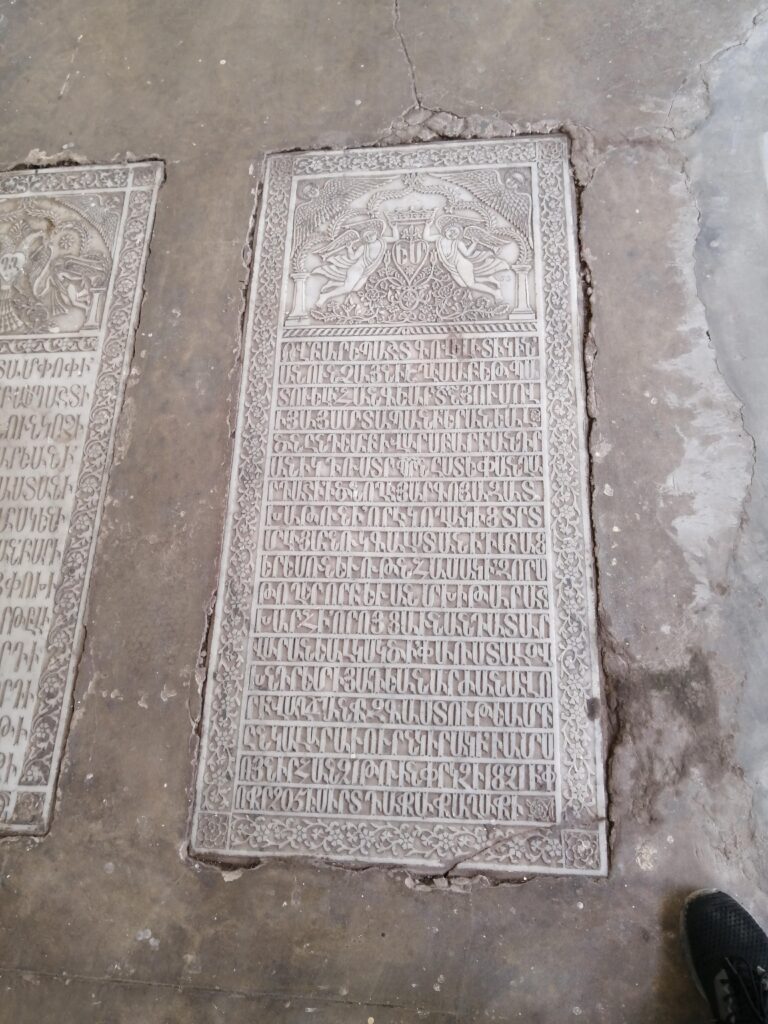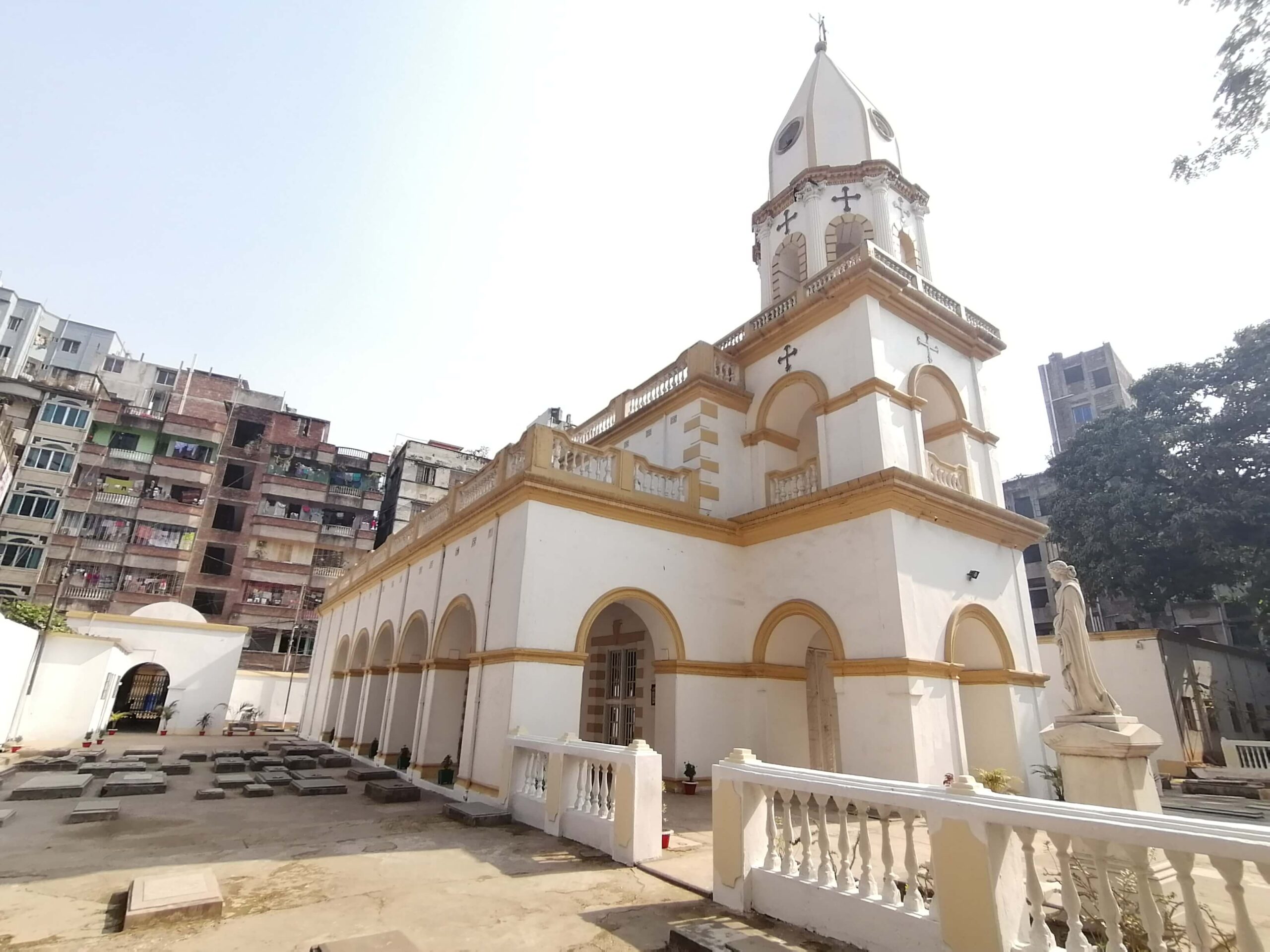Table of Contents
The Armenian Church in Dhaka, also known as the Armenian Apostolic Church of the Holy Resurrection, is one of the city’s most evocative heritage sites. Built in 1781, this church stands as a testament to the Armenian community that once flourished in Dhaka during the Mughal and British periods. Located in the historic Armanitola area of Old Dhaka, the Armenian Church not only preserves the architectural charm of the 18th century but also embodies the multicultural history of Bangladesh. The church complex, with its elegant whitewashed walls, iconic bell tower, and surrounding graveyard, reflects the lives and legacy of the Armenians who left their mark on the economic and social history of Bengal.
Historical Background of the Armenian Community in Dhaka
The Armenian presence in Bengal, including Dhaka, dates back to the 17th century when Armenians began migrating to the region primarily as traders. The Armenians of Persia (modern-day Iran) and other Middle Eastern countries initially came as traders along the ancient Silk Road, and many eventually settled in Bengal due to the thriving trade opportunities under the Mughal Empire. They primarily dealt in textiles, spices, and jute, which were some of the most lucrative products in Bengal. As skilled businessmen, the Armenians contributed significantly to the economy of Dhaka and became one of the most influential foreign communities in the region.
By the 18th century, Dhaka had become a prominent center for Armenian trade. The community built homes, established businesses, and constructed the Armenian Church of the Holy Resurrection in 1781, which became a spiritual and social hub for Armenians in the area. The church complex served as more than just a religious space; it was a gathering place, a site for celebrations, and a final resting place for the community.

Architectural Features of the Armenian Church
The Armenian Church is a beautiful example of colonial-era architecture with a touch of Armenian influences. Though simple in design, it has an elegance that speaks to its era. The church is built in a rectangular structure, with whitewashed walls and a series of arched doorways and windows that allow natural light to filter into the interior. The church’s walls and ceilings once held intricate murals and paintings, but these have faded over time.
One of the most striking features of the Armenian Church is its bell tower. The tower stands tall at the western end of the church and originally contained three bells, though only one remains today. The bell was used to signal the beginning of services and other church events, becoming an iconic sound in the neighborhood. The simplicity of the church’s design reflects the minimalist architectural taste of the Armenian community in Dhaka.
Inside the church, there is an altar where worship services were conducted. Although the church no longer holds regular services due to the dwindling Armenian community in Dhaka, the altar stands as a reminder of the church’s rich history. The interior also includes memorial plaques and inscriptions in Armenian, honoring those who contributed to the church and community.


The Churchyard and Graveyard
The Armenian Church is surrounded by a historic graveyard, where many members of the Armenian community in Dhaka were laid to rest. The gravestones, engraved with Armenian inscriptions, offer a poignant glimpse into the lives of those who once lived in the bustling city. The inscriptions bear witness to their heritage, professions, and connections to their Armenian roots. The graveyard is a blend of cultural symbolism and simplicity, with gravestones of various shapes and sizes, each telling its own story.
One of the most notable figures buried in the churchyard is Nicholas Pogose, an Armenian businessman and philanthropist who founded Pogose School in Dhaka in 1848. Pogose School was one of the earliest and most prestigious educational institutions in Dhaka, and it served as a pioneering force for education in Bengal. Pogose’s contribution to Dhaka’s education system is remembered as a crucial part of the city’s heritage, and his grave in the Armenian Church grounds reflects the lasting impact Armenians had on the city’s intellectual and social development.
The Decline of the Armenian Community in Dhaka
The decline of the Armenian community in Dhaka began in the late 19th century as political and economic conditions changed. As the British East India Company established greater control over Bengal, many Armenians migrated to other cities or returned to Armenia. Additionally, with the emergence of new trading routes and the eventual partition of Bengal, the Armenian presence in Dhaka further dwindled.
By the 20th century, the Armenian community in Dhaka had almost disappeared, leaving behind only a few families and the historic Armenian Church. Although there are very few, if any, Armenians left in Dhaka today, the church remains a symbol of their legacy in the city. In recent years, preservation efforts have helped restore and maintain the church, allowing visitors to connect with this important piece of Dhaka’s history.

Current Status and Preservation Efforts
In the absence of an Armenian community, the Armenian Church has become a heritage site, attracting both local and international visitors interested in the history of Dhaka. The church and graveyard have faced challenges over the years due to neglect and the passage of time, but there have been preservation efforts led by local historians, the Armenian Church of Kolkata, and cultural organizations. These groups have worked to protect the church from encroachment and damage, ensuring that it remains a place of historical importance.
Today, the church serves as a historical site rather than an active place of worship. The grounds are open to visitors who wish to explore its architectural beauty, learn about the Armenian community’s contributions to Dhaka, and pay respects to those buried in its graveyard. The Armenian Church continues to stand as a reminder of Dhaka’s rich, multicultural past.
Legacy and Cultural Significance
The Armenian Church in Dhaka is more than just a building; it represents the city’s diverse history and the integration of different cultures that contributed to its development. The Armenians, though a small community, played a significant role in Dhaka’s trade, education, and cultural landscape. Their presence in the city left an indelible mark, and the Armenian Church remains a symbol of their heritage and influence.
For Dhaka’s residents and visitors alike, the Armenian Church is a rare historical gem that highlights the importance of preserving the city’s multicultural legacy. The church stands as a place of reflection, where people can appreciate the contributions of different communities to the fabric of Bangladesh. It also reminds us of the transient nature of communities, as people come and go, but their legacies remain.
In recent years, the Armenian Church has attracted growing interest among historians, researchers, and tourists. Efforts to document the Armenian community’s history in Bengal and preserve the church as a heritage site have helped raise awareness about this unique chapter in Dhaka’s past. The church is now recognized as a valuable piece of cultural heritage, deserving of preservation for future generations.
The Armenian Church of Dhaka is a quiet, enduring symbol of the city’s multicultural heritage and serves as a reminder of the Armenian community that once thrived here. Built in 1781, it has withstood the test of time, preserving a part of Dhaka’s past that might otherwise have been forgotten. The church’s architectural beauty, historical significance, and cultural legacy make it a must-visit site for those interested in the rich history of Bangladesh. As Dhaka continues to grow and modernize, the Armenian Church remains a sanctuary of memory, reminding us of the city’s vibrant, diverse heritage.
How to go
From Zero point of Dhaka
wiki say’s: The Armenian Church, also known as Armenian Apostolic Church of the Holy Resurrection (Armenian: Դաքքայի Սուրբ Յարութիւն Եկեղեցի), is a historically significant architectural monument situated in the Armanitola area of old Dhaka, Bangladesh. The church bears testimony to the existence of a significant Armenian community in the region in the 17th and 18th centuries.
Have a Nice Day

Leave a Reply